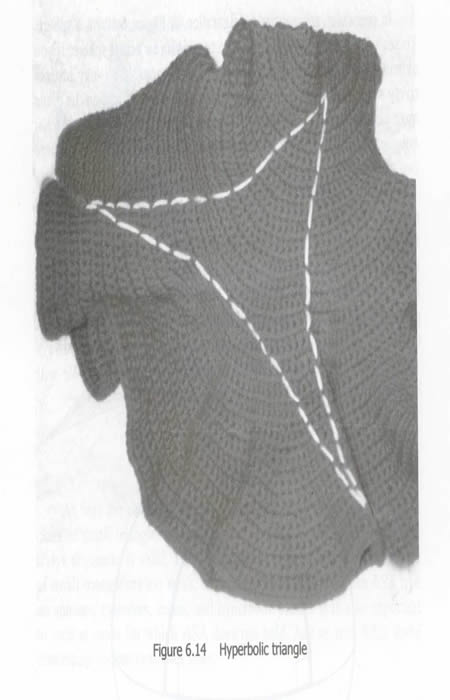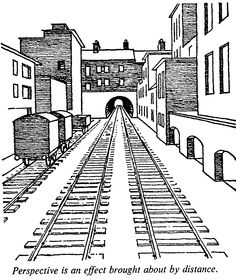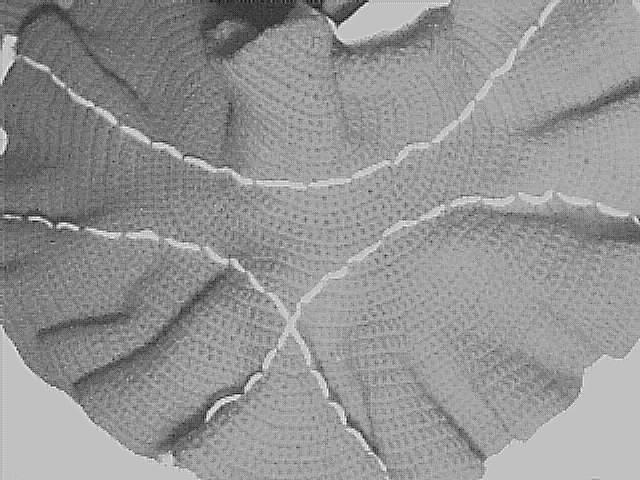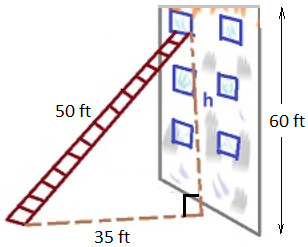(a) always 180 degrees
(b) never 180 degrees
(c) sometimes 180 degrees
(a) 180 degrees
(b) 150 degrees
(c) other
Walking and folding an angle sum in Euclidean geometry
Angle sum in the crochet model of hyperbolic geometry (Echer's space)


Sketchpad Angle sum and Image of Angle sum
discuss local (close to Euclidean geometry) to global (geometry is very different) perspectives
(a) intersect in a vanishing point so there are zero parallels in this geometry
(b) look parallel to the viewer
(c) both answers are true

(a) always holds
(b) never holds
(c) sometimes holds
(a) always holds
(b) fails because there is more than one symmetric path that never intersects the original



(a) holds because the sum of the squares of the bases surrounding a right angle equals the square of the hypotenuse of a right triangle
(b) never holds
(c) sometimes holds

Pythagorean theorem water demo